Best views of Copenhagen
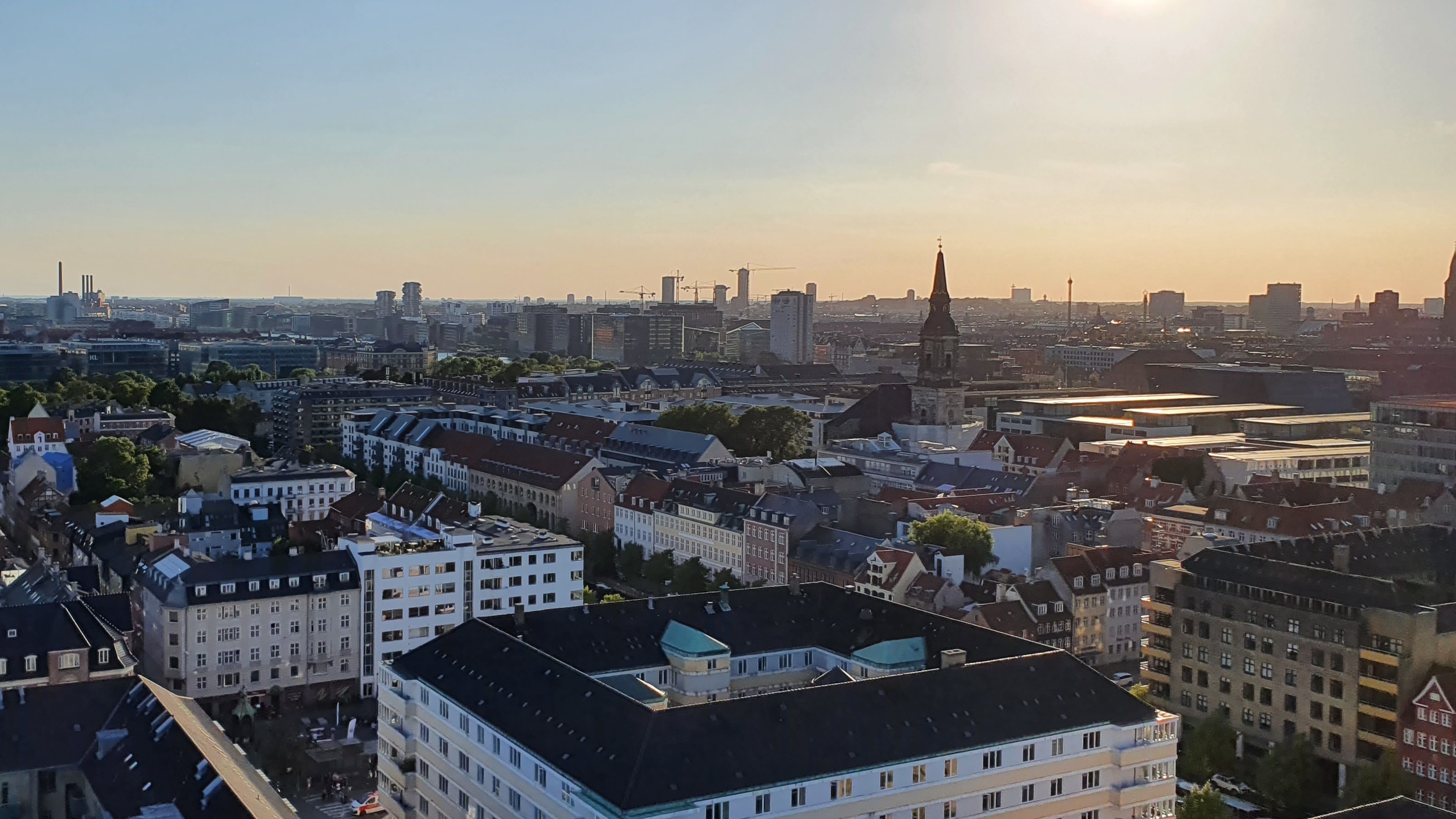
Rundetårn
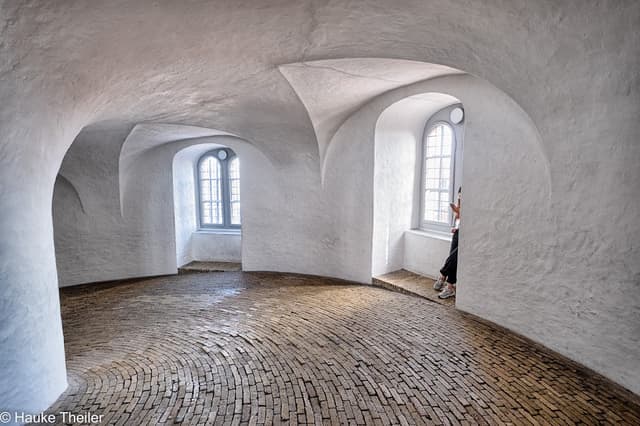
It seems that every European city has some sort of old tower that inevitably finds its way into every city guide. So, I might as well start with Copenhagen’s version of this classic attraction.
Rundetårn—literally “Round Tower”—was built in 1642 by the renowned builder-king, Christian IV, to whom we can credit much of old Copenhagen’s architecture. The tower stands 34.8 meters (114.17 feet) tall and was constructed as part of Trinitas Church. Historically, the church functioned as a university church for the nearby Copenhagen University and doubled as a library until the Great Fire of 1728, which destroyed much of the city.
King Christian IV was a man of the Renaissance, and his passion for science and understanding the world is evident in this impressive architectural feat. The primary purpose of the tower was to serve as a stellar observatory for the university, allowing students to study the stars and better understand the world around them. Even today, the cupola at the top of the tower is open to the public on certain nights, offering visitors the chance to observe the stars.
What makes Rundetårn particularly unique is that it doesn’t have any stairs. Instead, visitors ascend via a spiraling ramp to reach the top. According to legend, this design was so the king could ride his horse-drawn carriage to the top without climbing stairs. However, it’s more likely that the ramp was intended to transport heavy astronomical equipment to the observatory.
The view from the top offers a fascinating glimpse of inner Copenhagen, allowing visitors to appreciate the complexity of the city’s layout. From above, it’s easy to imagine the medieval streets and grids that have remained largely unchanged since they were first constructed. As its name suggests, the viewing platform is circular and provides a 360-degree panoramic view of Copenhagen. From this vantage point, you can spot many of the city’s churches and some of the other attractions on this list.
Practical Information:
Opening Hours: The tower is open almost every day, except for December 24th and 25th, and January 1st.Entry Fee: Adults: 40 DKK, Children: 10 DKK (Free for children under five).For more details, visit Rundetårn’s website.
Christiansborg Tower
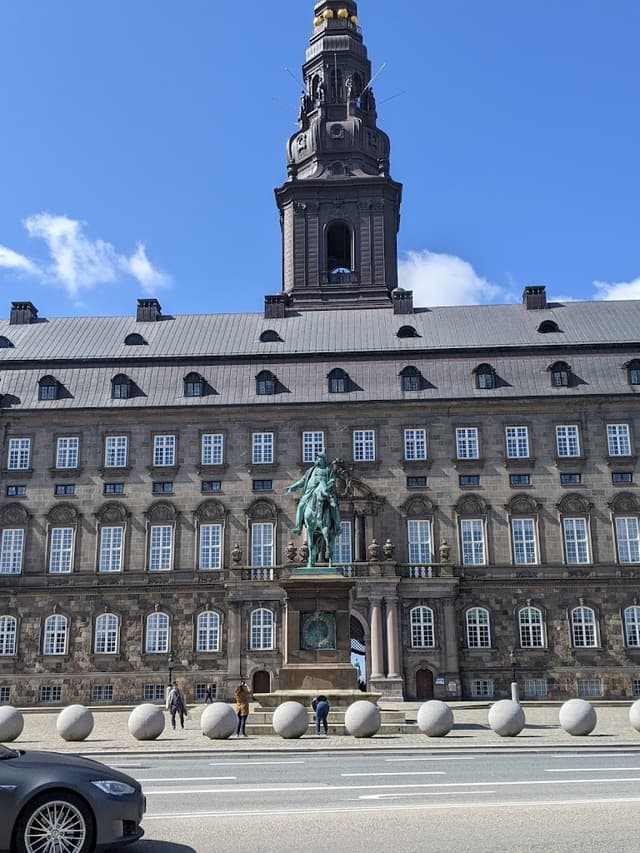
This lighthearted joke, which I think translates across many cultures, pokes fun at Denmark as a country with some of the highest tax levels in the world. However, jokes aside, those taxes do provide us with significant benefits, such as free healthcare and university education.
But since you’re just visiting (and hopefully won’t need to test our healthcare system), why not enjoy a free trip up Christiansborg Tower and take in one of the most inspiring views of beautiful Copenhagen?
The site of Christiansborg Castle has been home to numerous keeps and castles over the centuries, starting with Absalon’s Castle, which dates back to the founding of Copenhagen in 1167.
The current Christiansborg Castle was completed in 1928 and was specifically designed to house the Danish Folketing (parliament), the executive branch of government, and the Supreme Court.
Interestingly, the present-day castle was built on the ruins of earlier castles that had burned down. The architects intended to construct a modern castle with a grand tower, but budget constraints led to numerous redesigns before the project was completed.
The central tower stands at an impressive 106 meters (347.77 feet), while the viewing platform is located at 44 meters (144.35 feet).
From this vantage point, you can enjoy a 360-degree panoramic view of Copenhagen. The platform offers great views of nearby castles and government buildings, as well as the Gammel Strand neighborhood, known for its elegant facades. You can also look down onto the castle’s central square, which is often used for horse riding. From the tower, you’ll see many of the city’s other towers and churches, their spires typically topped with crosses. On a clear day, you can even spot Malmö in Sweden, just across the Øresund Strait.
Practical Information:
Cost: Visiting the tower is completely free.Entry: An airport-style security check is required before entry.For more information, visit The Danish Parliament’s website. Note: People often struggle to find the entrance to the tower. It is done through the central gate of the building itself, just below the tower.
Marmorkirken
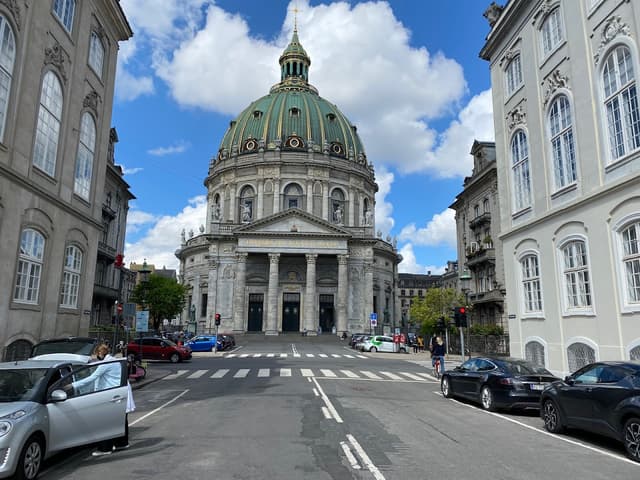
Among all the impressive churches in Copenhagen, I believe Marmorkirken—the “Marble Church”—stands out the most. Its grand, round cupola-shaped tower rises majestically above the rooftops, creating a striking feature of the city’s skyline. Since the 1600s, there were plans to build a symmetrical section of Copenhagen, later known as Frederikstaden—the town of Frederik. Today, this area is one of the city's most prestigious neighborhoods, home to former noble estates, embassies, and notable landmarks. The Amalienborg Palace, with its iconic four mansions, has served as the official residence of the Danish royal family since 1794. If you spot the royal monogram flags flying, it’s a sign that a member of the royal family is at home.
The Marmorkirken was envisioned in the 1700s, but construction faced repeated delays due to disagreements over its design and shifting priorities among various monarchs. It was finally completed in 1894, thanks to funding from the businessman Carl Frederik Tietgen, who later gifted the church to the state. While the church is still used for official ceremonies, it has unique restrictions for personal events. For instance, if you wish to have your wedding here, you must marry a local whose family has been rooted in the associated parish for at least three generations.
The view from the church tower offers a stunning perspective of the carefully planned urban design of the area. From the top, you can see the central axis that runs through the heart of the church, across the courtyard square of Amalienborg Palace, and all the way to the modern Copenhagen Opera House on the opposite side of the harbor. This axis showcases over 250 years of thoughtful urban planning. On one side of the tower, viewers can admire the structured beauty of Frederikstaden, built with inspiration from Europe’s greatest capitals.
On the other side, there’s the bustling Copenhagen harbor, lined with historic warehouses and industrial structures—the lifeblood of the city’s past and present.
Practical Information:
Access: The tower is open to the public but can only be visited through guided tours in groups of 15. Tours cannot be pre-booked, and cancellations may occur due to weather or church services.Entry Fee: 50 DKK
Filmtaget, Cinemateket

Cinemateket is part of the Danish Film Institute and functions as a museum, film library, and cinema, celebrating both Danish and international film history and culture. The cinema itself is worth visiting, with diverse themes and screenings that cater to every taste.The Filmtaget is the newest feature, offering a unique urban space in Copenhagen: an open-air, interactive museum designed for all ages. Whether you’re a Danish film enthusiast or simply curious to learn more about Denmark’s contributions to the film industry, it’s a visit worth making. Children can enjoy the play area, and there are also film screenings under the open sky.
As for the view, I was pleasantly surprised by both the location and the vistas it offers. Positioned beside Kongens Have, the rooftop provides a striking perspective of the baroque-style gardens, originally designed during the reign of King Christian IV in 1606—the same king who built Rundetårn. The pathways, lined with linden trees, frame the magnificent Rosenborg Castle, a jewel of Danish architecture.
Practical Information:
Access: Entry to the Filmtaget is free, but access is through Cinemateket.Film Screenings: Tickets for film screenings must be purchased separately.
Vor Frelser Kirke
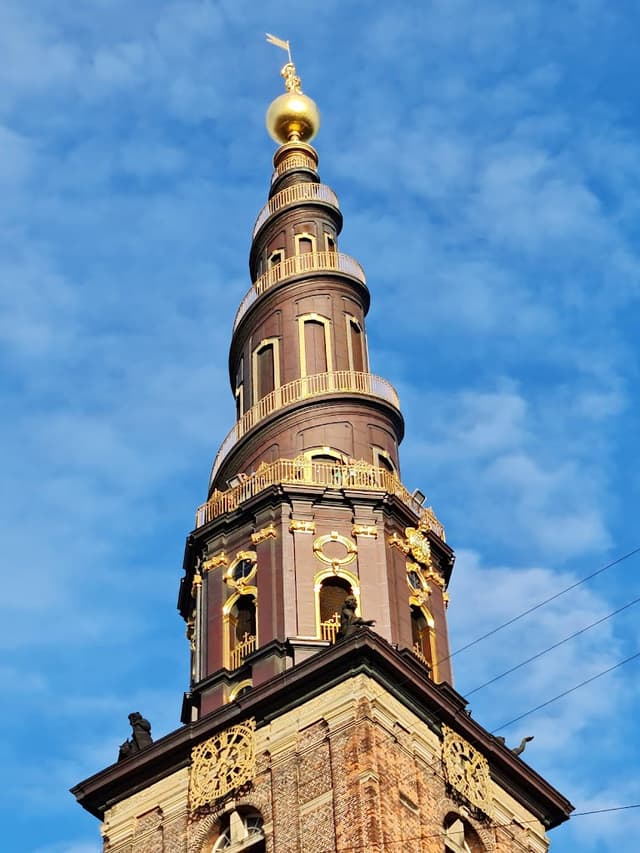
Once again, we can thank the builder-king Christian IV for shaping Copenhagen into the beautiful metropolis it is today.
Dating back to 1639, Christianshavn was initially envisioned as a completely different city, built on reclaimed seabed, with Amsterdam as the inspiration. This is evident in its canals and Dutch-inspired housing, and Dutch merchants were even invited to settle here. To crown the new city, a separate church was planned, with construction beginning in 1682 and finishing fourteen years later. However, the iconic spiral tower, designed by Danish architect Lauritz de Thurah, wasn’t completed until 1749. The tower is one of the most unique in Copenhagen, featuring an exterior spiral staircase that winds its way up to the spire. It is said that French author Jules Verne was inspired by this tower when writing Journey to the Center of the Earth in 1864.
Walking up the staircase, the path narrows and can be slippery on rainy days, but the view from the top is absolutely stunning. It offers an impressive panorama of Christianshavn’s iconic canals and the old town of Copenhagen, which is just a stone’s throw away across the main harbor. From the tower, you can gaze across the rooftops of Copenhagen to the suburbs on the other side of the city and enjoy views of the surrounding landscape to the north and west.
You can also see the island of Amager, with its apartment blocks, and watch planes as they approach Copenhagen Airport in the distance. On a clear day, you can even spot the green pastures of Amagerfælled and Kalvebodfælled. I recommend visiting this spot with a special someone, as I once did with a beautiful woman – a beautiful woman who is now my beautiful wife.
Practical Information:
Ticket Booking: Due to high demand, tickets must be booked in advance via their website.Prices: 69 DKK per person, with discounted prices for students, seniors, and children.
Glyptoteket
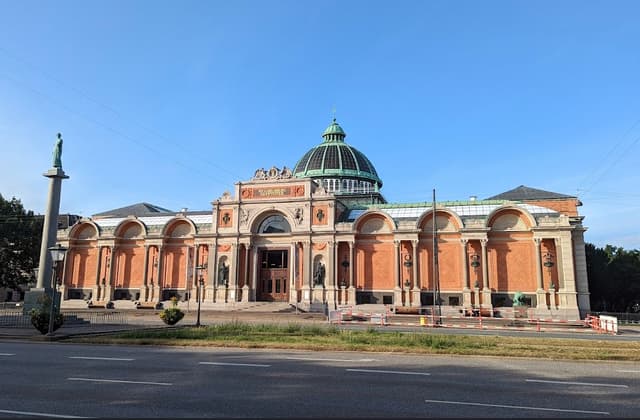
The Glyptotek has long been at the forefront of Copenhagen's cultural scene, with its location described as an oasis in the middle of the city. Its exhibitions and Winter Garden attract both locals and tourists, but the rooftop, a relatively recent addition, offers a perfect spot in the summer for views of Copenhagen and a relaxing lounge area. During the season, the rooftop features a bar serving refreshing cold beer, and occasionally, they host talks and seminars. A popular event is late-night stargazing, where an astronomer gives an informal lecture about the night sky.
From the rooftop, you’ll enjoy views of H.C. Andersen Boulevard, the busiest street in Copenhagen, which leads to Rådhuset (Copenhagen City Hall). Completed in 1905, the City Hall was inspired by the design of the city hall in Siena, Italy. The view also allows you to look directly down into Tivoli Gardens, with their floral pathways and joyful visitors. The most fun part, though, is watching the roller coasters and carousels in motion while hearing the thrilled screams of those riding them.
Practical Information:
Entry Fee: 125 DKK, which grants full access to the museum and the rooftop.Free Entry: The last Wednesday of every month.Note: The rooftop may be closed during the winter season or for private events.
Himmelskibet, Tivoli Gardens
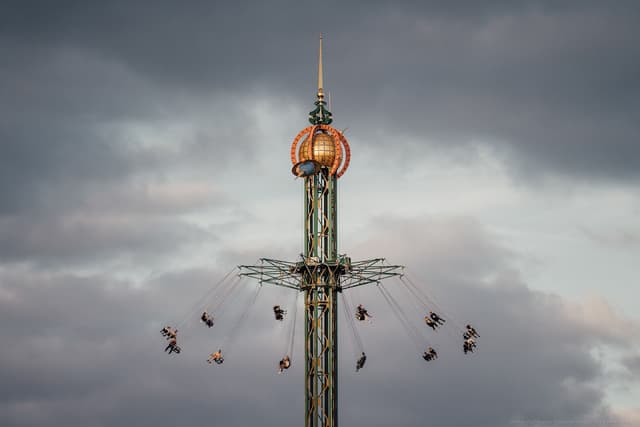
Tivoli Gardens is one of the oldest and most beautiful amusement parks in the world, and it’s one of the top tourist attractions in Copenhagen. Originally a park and fairground, Tivoli has inspired amusement parks worldwide, including Walt Disney's Disneyland, which sought to create a magical and fun place for the whole family.
In 2006, the park introduced Himmelskibet – The Star Flyer – a towering carousel that reaches 80 meters (262.4 feet) above street level, making it the tallest carousel in Northern Europe. It spins its riders at speeds of up to 70 km/h (43 mph), providing a thrilling experience as you soar above the rooftops of Copenhagen.
While enjoying the ride, you’ll get to take in stunning views of the park’s grounds, the nearby Rådhuspladsen (City Hall Square), and the Vesterbro neighborhood. Vesterbro, once considered the "rough" part of Copenhagen, is now a trendy area filled with hipsters, craft beer enthusiasts, and young creatives. From the Star Flyer, you’ll also have a great view of the Central Station, which opened in 1911 and offers train services to all of Denmark and Europe. See if you can spot the Danish-built ABB Scania IC3 trains!For me, though, I’ll likely be enjoying a beer at ground level and chatting about trains instead.
Practical Information:
Entry Fee: A ticket to Tivoli Gardens is required, and ride tickets are sold separately, though you can also buy a combined entry and ride ticket.
Zoo-Tårnet
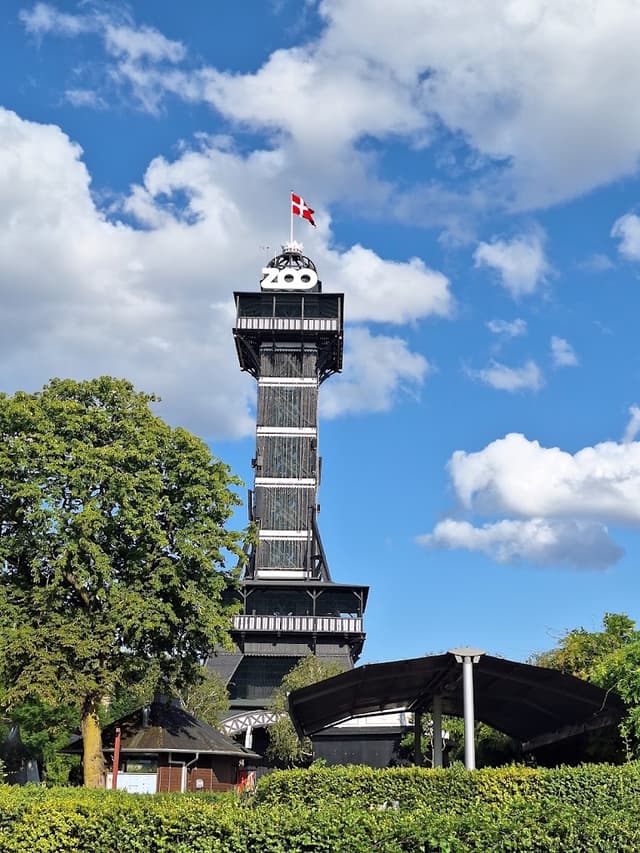
The tower, dating back to 1905, was once the most famous attraction in Copenhagen for many years. Though it stands at only 43.5 meters tall, it is perched on top of Valby Bakke, which is 25.5 meters above sea level. This location already offered great views, and the tower only enhanced them. For a long time, it was considered the best vantage point in Copenhagen, offering sweeping views of the entire city. It even appeared on posters, stickers, and fridge magnets. The tower was inspired by the Eiffel Tower in Paris, though you could say it was a more affordable alternative, being made of wood and significantly shorter.
From the top of the tower, you can see across the city and into the old town with its iconic church towers (including the one I mentioned earlier), as well as the Frederiksberg Have gardens and the green, residential Frederiksberg neighborhood. On a clear day, you can spot the Øresund Bridge connecting Denmark to Sweden, and even the towers of Roskilde Cathedral, about 30 kilometers away.
Practical Information:
Entry Fee: Access to the tower requires a ticket to Copenhagen Zoo, which costs 249 DKK per person. There’s an extra 20 DKK charge, which goes towards funding wildlife conservation efforts worldwide.
Illum Rooftop
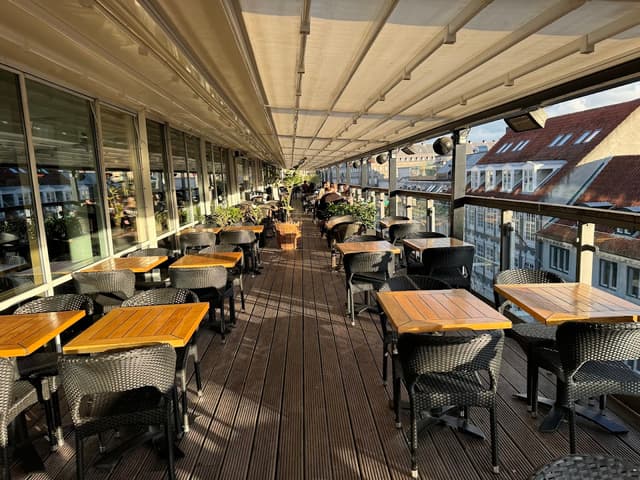
Illum is a popular department store where locals go to stay on top of the latest fashion trends. If a new store or brand is taking the world by storm, it’s likely that Illum will be the place to find it. That’s how I was introduced to Muji.
While the building itself is a classic department store, the top floor offers an open space featuring new brand and lifestyle stores, a food court, and shops dedicated to Danish design.
As for the view, I enjoy going to the Illum Rooftop for a coffee and a snack. The space promotes itself as a cool spot with restaurants and bars catering to all tastes, offering stunning views. While it may not provide the sweeping panoramas of Copenhagen seen from other spots on this list, it does offer a unique look at the city’s iconic tin rooftops, each with its own distinct design. You can relax, enjoy good food, and soak in the chill vibe.
From here, you’ll notice many small corner towers dotting the inner city. When English travelers visited Copenhagen in the 1800s, they referred to the city as having “many towers,” and I think you can see why from Illum – especially the Højbrohus across the street, with its green tower and rooftop tiles.
From the Illum Rooftop, you can look down on Amagertorv Square, with its elegant Storkespringvandet fountain, featuring stork figurines and built in 1894. The square is always busy with shoppers and tourists exploring Strøget, Copenhagen’s main shopping street. From this vantage point, you get a sense of the bustling city, attracting visitors from all over the world.
Further up, you can see Højbro Plads, with the statue of Bishop Absalon, the founder of Copenhagen, dominating the square. At the end of the square, you’ll spot the imposing, new-baroque Christiansborg Castle, which is home to the Christiansborg Tower.
It’s a nice view, and one of the better places in Copenhagen to get an overpriced coffee.
Practical Information:
Entry: Access to Illum and the rooftop is free.
CopenHill – Amager Bakke
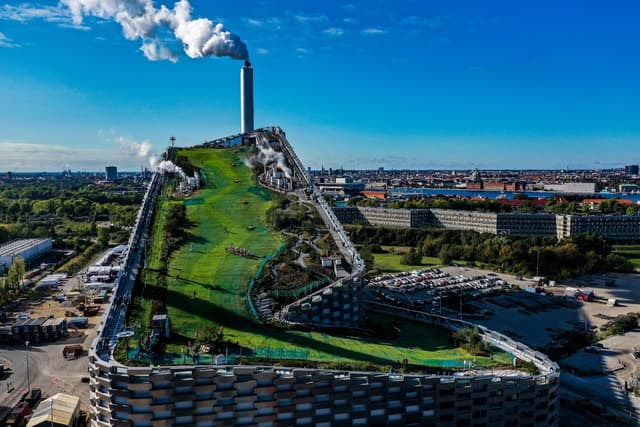
There are literally no mountains in Denmark, but if you brought your ski equipment, fear not—Copenhagen has built its own small mountain for people to ski upon. Recently, I’ve seen many images and videos on social media of Copenhagen’s latest and most unusual marvel: CopenHill. It doesn’t get enough credit, as this is one of the most creative attempts to add height and altitude to Copenhagen’s otherwise flat landscape.
In 2017, as part of its focus on green energy and sustainability, the city funded a new waste sorting and incineration facility. This was part of Copenhagen’s ambition to become a greener, more environmentally conscious city. To make the project iconic, renowned Danish architect Bjarke Ingels was tasked with designing the facility. But beyond that, the facility was made accessible to the public as a recreational space. Since Denmark lacks mountains, they decided to kill two birds with one stone.
The roof was designed as an artificial ski slope, complete with a built-in lift system. For the adventurous, there’s even a climbing wall on the side. I’ve personally tackled the 770-step climb (that’s 39 floors, in case you were wondering), but don’t worry—there’s also an express elevator if you’re not in the mood for a workout. The top section houses a lounge and bar area, so you can enjoy a cold drink while taking in the amazing views. And rest assured—the beer is definitely not recycled.
CopenHill is the tallest point in Copenhagen, and it truly feels like it. Situated on the man-made island of Refshaleøen, it stands apart from the inner city, with nothing obstructing the stunning 360-degree views at 78 meters. From the top, you can see all of Copenhagen’s cityscape, including the hills to the north and west, as well as the entire length of Amager Island, where Copenhagen Airport sits.
Looking south, you can gaze over Amager Strand, a popular beach site, and on a clear day, spot the Øresund Bridge connecting Copenhagen to Malmö, Sweden. Malmö itself is easily visible, with the distinctive Turning Torso building standing tall. What’s even more impressive is the view of Sweden’s coastline and, on a particularly clear day, you can even make out fields and landscapes inland.
From up here, you can see the fortress islands of Middelgrundsfortet, which protected Copenhagen for centuries, and the small village communities on Saltholm Island. The Øresund Strait below looks like a calm pool, with ships appearing as tiny toy boats.
Practical Information:
Access: The hill is free to access, including both the staircase and the elevatorOpening Times: Open from 12:00 to 19:00 most days (times may vary). Ski Equipment Rental: Available at the ski center.
Herstedhøje
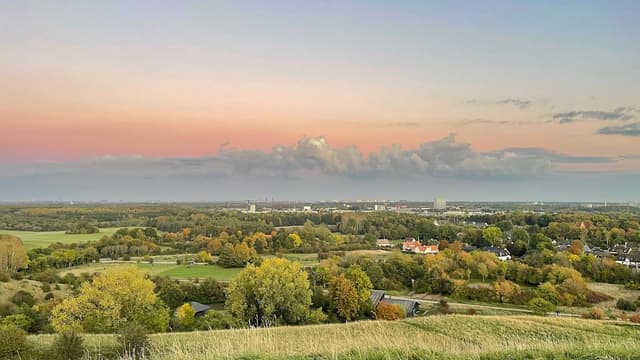
In the 1960s, to address the city's waste issues, large mounds of leftover building materials and trash were created. Over time, these mounds were covered in sand and grass, transforming the area into the Herstedhøje Nature Center—a beautiful park surrounded by lush, green recreational spaces. This area offers horse riding and outdoor sports facilities. The surrounding forests are perfect for hiking and leisurely strolls.
The nearby town of Albertslund is itself an interesting example of 1960s welfare projects, designed as a walkable, affordable city with plenty of green space. The town's layout features pedestrian and bicycle paths fully separated from roads, making it a pleasant area to explore.
This is exactly how I arrived here, on a nice summer day with my good friend Simon. We grabbed some beers and biked all the way from the Copenhagen center via the newly built Super Cykelsti network, which features some of Denmark’s best bicycle paths. The ride itself was an experience, as we passed trendy apartment neighborhoods, luxury villas, quaint suburbs, and forested areas, before suddenly encountering the hill. We raced up, though the steep incline meant Simon won the race. The cold beers we brought were the perfect refreshment as we took in the view.
At 45 meters tall and 67 meters above sea level, the mound offers stunning panoramic views. From here, you can see the entire city of Copenhagen, with its many church towers, modern residential areas, and the apartment blocks of the western suburbs. The shape of the city is laid out before you like a sprawling shrub, with different parts of Copenhagen overlapping and expanding outward. The island of Amager is visible, dotted with wind turbines on its southern side, while the Øresund Bridge can be seen in the distance, connecting Denmark to Malmö, Sweden. Further south, you can spot the curved coastline of Køge Bugt and, on a clear day, the cliffs of Stevns, over 50 km away. Looking east, you’ll spot the twin-belltower of Roskilde Cathedral and to the north-east, the iconic stepped shape of the Grundtvigs Church in Bispebjerg.
To help guiding you, the tallest point of the hill, has a compass that will point you to any interesting feature or area, with a description of what you’ll be looking at.
Practical Information:
Access: The park and green space are open to the public. I recommend biking here as I did, but only if you're comfortable cycling through the inner city and suburbs—Copenhageners can be quite aggressive on two wheels! Alternatively, take the S-Train to Albertslund Station and walk for about an hour.Parking: The nearby nature center offers parking for those arriving by car.Note: The hill is a pasture for sheep and horses, so be sure to stick to the paths and be mindful of the animals.
The home for unique & authentic travel